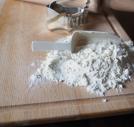Care for a Diabetic Child: The Importance of Insulin
If your child has been diagnosed with type 1 diabetes, there are many things you should know about diabetes, insulin and testing blood sugar levels.
Type 1 diabetes is a condition in which the pancreas no longer produces enough insulin, which the body needs to survive. In the past, type 1 diabetes was also known as juvenile diabetes or insulin-dependent diabetes.
Diabetes Treatment and Learning the Ropes
Unfortunately, type 1 diabetes is a long-term illness that needs to be continuously treated throughout life. This will include blood sugar monitoring, insulin, healthy eating and regular exercise for your child. Over time, your child's diabetes management plan may change; he or she may need different doses or types of insulin, a new meal plan or other treatment changes. Remember that although your child's diabetes may seem overwhelming, you will have the help of your child's diabetes treatment team – doctor, diabetes educator and registered dietitian – to help you keep your child's blood sugar levels as close to normal as possible.
Blood Sugar Testing
You may need to check and record your child's blood sugar level at least three times a day, depending on what type of insulin therapy your child needs. This will involve frequent finger sticks, which can be a little daunting, but frequent testing is the only way to make sure that your child's blood sugar level remains within his or her target range. You will know what his or her target range is through your doctor. Your doctor may also ask you to keep a log of the blood glucose readings, or he or she may download that information from the blood glucose meter.
Insulin Treatment
People who have type 1 diabetes need insulin treatment in order to survive. Currently oral insulin is not an option for lowering blood sugar because stomach enzymes interfere with insulin being taken by mouth. Depending on your child's needs and age, the doctor may prescribe a mixture of insulin types to use throughout the day and night. There are a large number of insulin treatment options available that your doctor may prescribe:
- Rapid-acting insulin, such as insulin lispro (Humalog) and insulin aspart (NovoLog), starts working in five to 15 minutes and peaks 30 to 90 minutes later.
- Short-acting insulin, like human insulin (Humulin R, Novolin R and others), starts working 30 to 60 minutes after injection and generally peaks in two to four hours.
- Long-acting insulin, such as insulin glargine (Lantus) and insulin detemir (Levemir), has almost no peak and can provide coverage for as long as 20 to 26 hours.
- Intermediate-acting insulin, such as NPH insulin (Humulin N, Novolin N), starts working one to three hours after it's taken and peaks in eight hours. However, it is more likely to cause low blood sugar as well.
Insulin Delivery
Insulin is typically injected using a fine needle and syringe or an insulin pen. An insulin pen is a device that looks much like an ink pen, except the cartridge is filled with insulin. An insulin pump can also be an option for your child. A pump is about the size of a cell phone and is worn on the outside of the body. When a pump is used, a tube usually connects the reservoir of insulin to a catheter that's inserted under the skin of the abdomen.
A wireless pump that uses small pods filled with insulin is another option that's available now. The way that either pump works is that they are programmed to dispense specific amounts of insulin automatically. These pumps can also be adjusted to deliver more or less insulin depending on meals, activity level and blood sugar level. The most important thing is to become acquainted with your child's medication, medical equipment and symptoms so that you can provide him or her with a comfortable, normal life.
Source: MayoClinic.com


































